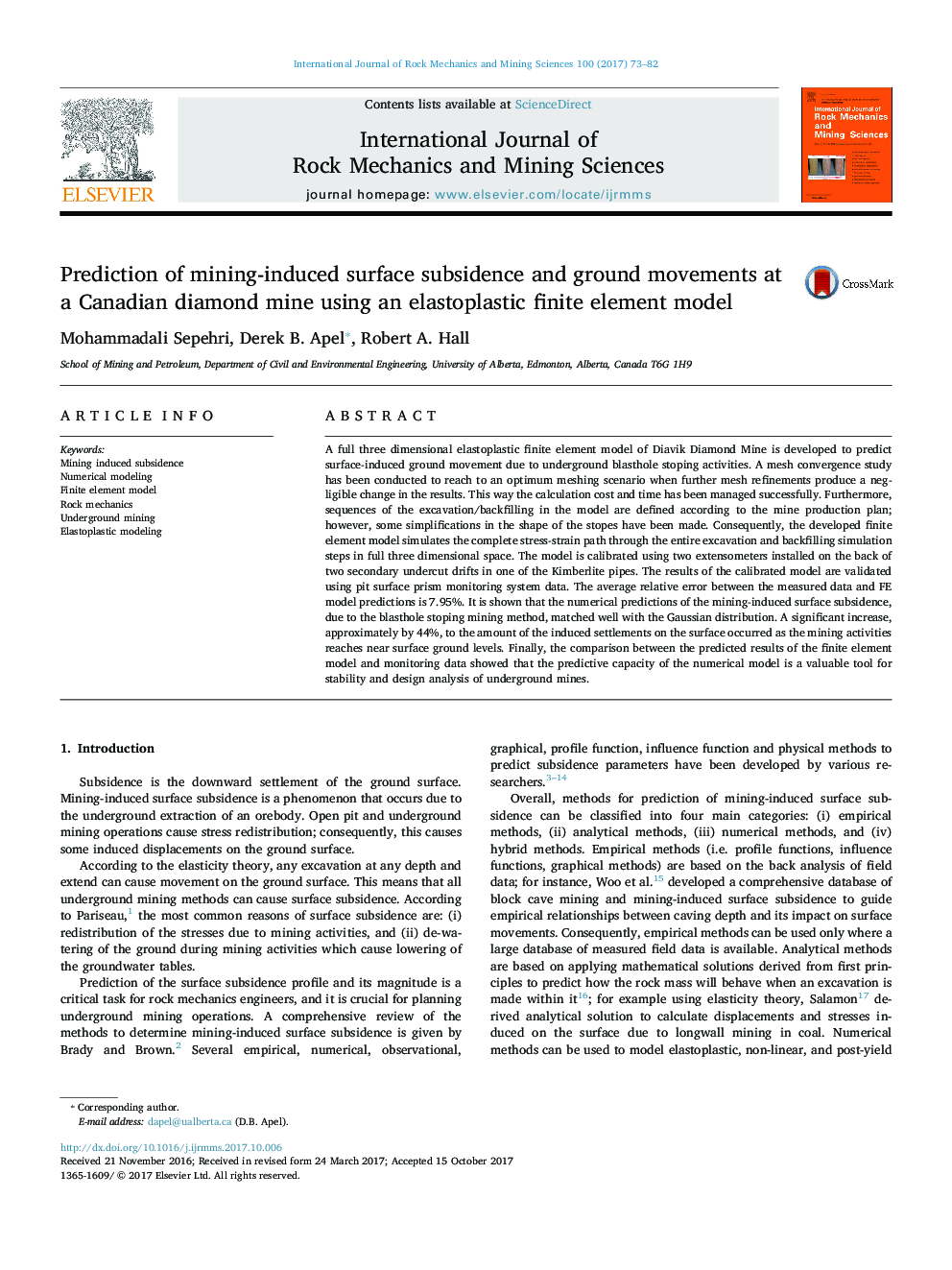| Article ID | Journal | Published Year | Pages | File Type |
|---|---|---|---|---|
| 7206406 | International Journal of Rock Mechanics and Mining Sciences | 2017 | 10 Pages |
Abstract
A full three dimensional elastoplastic finite element model of Diavik Diamond Mine is developed to predict surface-induced ground movement due to underground blasthole stoping activities. A mesh convergence study has been conducted to reach to an optimum meshing scenario when further mesh refinements produce a negligible change in the results. This way the calculation cost and time has been managed successfully. Furthermore, sequences of the excavation/backfilling in the model are defined according to the mine production plan; however, some simplifications in the shape of the stopes have been made. Consequently, the developed finite element model simulates the complete stress-strain path through the entire excavation and backfilling simulation steps in full three dimensional space. The model is calibrated using two extensometers installed on the back of two secondary undercut drifts in one of the Kimberlite pipes. The results of the calibrated model are validated using pit surface prism monitoring system data. The average relative error between the measured data and FE model predictions is 7.95%. It is shown that the numerical predictions of the mining-induced surface subsidence, due to the blasthole stoping mining method, matched well with the Gaussian distribution. A significant increase, approximately by 44%, to the amount of the induced settlements on the surface occurred as the mining activities reaches near surface ground levels. Finally, the comparison between the predicted results of the finite element model and monitoring data showed that the predictive capacity of the numerical model is a valuable tool for stability and design analysis of underground mines.
Related Topics
Physical Sciences and Engineering
Earth and Planetary Sciences
Geotechnical Engineering and Engineering Geology
Authors
Mohammadali Sepehri, Derek B. Apel, Robert A. Hall,
